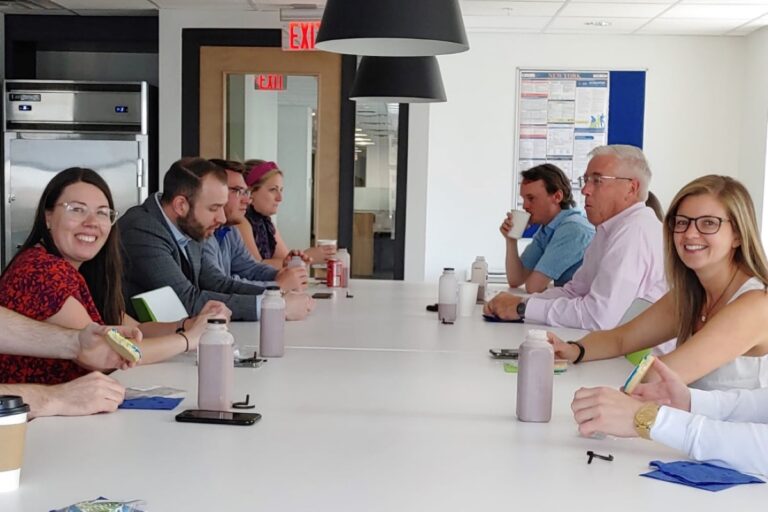Winning Strategies behind LiveRamp as One of Most Successful Tech Acquisitions
Which has been the most successful merger or acquisition in the history of business? Originally appeared on Quora: the place to gain and share knowledge, empowering people to learn from others and better understand the world.
While most acquisitions are not super successful, some are amazingly transformative.
I will give you my first-hand account of the great experience I had when LiveRamp (where I was co-founder and CEO) was acquired. Acxiom (NASDAQ: ACXM) acquired LiveRamp on July 1, 2014 (three years ago) for $310 million (22% of their market cap at the time). Today LiveRamp is worth over $1.6 billion — over five times its purchase price. Note: I am no longer an employee of Acxiom or LiveRamp and the opinions here are my own.
Most people in the industry see the LiveRamp acquisition as one of the best tech acquisitions in the last decade. Why did this transaction perform so well when others have done so poorly?
Culture Really Matters
Successful companies can have very different cultures. One culture is not inherently better than another … but for any given person, one culture trumps another. Superstars join and stay at a company because they like the culture. If that culture abruptly changes, the best people tend to leave. To keep your top performers, do everything possible to keep the culture of the acquired entity intact.
Acxiom did a great job of keeping LiveRamp in a silo with an independent office, brand (see below), HR policies, and more. Because of this, almost everyone on LiveRamp’s core team is still at the company three years later.
Brand Matters
When you acquire a company, you should first assess the value of its brand. If the brand is working, then the product is working. So, keep the brand. When B2C companies acquire, they almost always keep the brand. Instagram, YouTube, and Zappos all continue to be great brands today. The best branding companies in the world, CPG companies like Unilever, have hundreds of well-known sub-brands (Unilever’s portfolio of brands include: Axe, Dove, Hellmann’s, Lipton, Pond’s, Vaseline, Ben & Jerry’s, Breyers, Q-tips, and more). It would be unthinkable for Unilever to rebrand Lipton to “Unilever Tea.”
B2B companies, for some reason, almost always change the name of the great brands they acquire. ExactTarget , BlueKai , Krux Digital, Responsys , EchoSign, and more were amazing brands. In fact, many of these brands continue to be well regarded today even though they were killed many years ago. These brands could have been built on rather than retired.
Killing a great brand immediately decreases the value of the company acquired, it hurts the morale of the people acquired, and it makes it hard to differentiate products within the mother company (and it seems they all use the same “Marketing Cloud” moniker).
One of the reasons LiveRamp has prospered is because it kept the brand. Today the LiveRamp brand is stronger than it has ever been.
Be Humble and Check Your Ego
Acquirers often think they can run the acquired companies better. Their reasoning is “we acquired them … not the other way around.” But a humble executive would think “wow, I just spent all this money acquiring this company. I wish we could have built that ourselves. I could learn a lot from them.”
This humility is usually only practiced by the very best acquirers (Berkshire Hathaway, Priceline, etc.)
Scott Howe, CEO of Acxiom, did something that very few CEOs would do when acquiring a company that is 22% of his market capitalization … he left it alone. Scott checked his ego and said, “I’m going to trust the people who built this company.” He gave the team a very long rope and let them run.
Most CEOs would have meddled with this new shiny object. For sure they would have added some value but likely also caused a great deal of pain. Scott Howe entrusted the team to do great things … and for that, his company was greatly rewarded.
Buy a Great Company
This is the simplest but hardest advice. Of course, you should have a well thought out plan for why 1+1 = more than 3 post-acquisition … but it is even more important to acquire a great company from the start. Too many start-ups are built to flip … not built to last.
While there are no absolutes in acquisitions, here are a few heuristics to help identify companies that will stand the test of time:
• The company clearly does at least one more thing better than anyone else
• The business has a moat
• Their engineering team is better than yours
• They invest more in R&D than in sales and marketing
• They have a deep bench of leaders
• The company is not reliant on the charismatic founder
• They have an amazing brand
Acxiom got to know LiveRamp over the course of three years (where LiveRamp was a strategic vendor). Before acquisition, Acxiom was already paying LiveRamp over $3 million / year and had met dozens of people in the company through that relationship.
Contributed by Auren Hoffman, SafeGraph CEO. fmr LiveRamp CEO. “World of DaaS” podcast.









